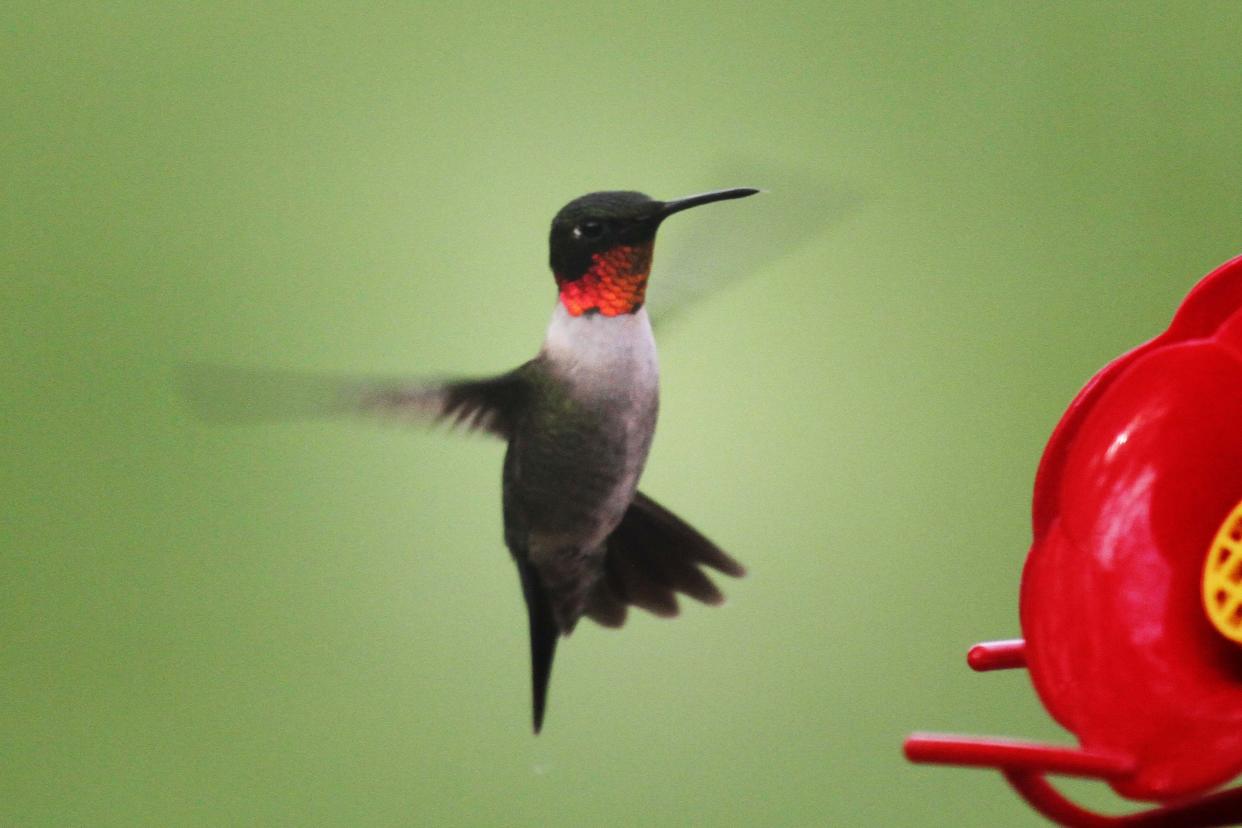Here are 5 ways you're killing birds, but may not realize it
Are we loving birds to death? Here are five of the worst things we do to endanger their survival.
Allowing dirty feeders
Failing to clean and replace nectar in hummingbird feeders every three days or neglecting to clean seed feeders every two weeks results in mold and bacteria-laden food. Hot rainy weather worsens the threat.
As birds congregate amid dirty feeders, they spread diseases like salmonella, E. coli, and conjunctivitis. Sick birds rarely regain health.
Allowing debris accumulation under feeders
As messy eaters, birds drop seeds and hulls. Accumulated debris molds and spreads disease. Cornell Lab of Ornithology recommends raking up debris at least every two weeks, oftener in wet weather. Eliminating debris also discourages rodents and raccoons, both of which threaten birds.

Destroying nests
Birds nest in places they deem safe for eggs and nestlings. Even if we don't like the sites they choose, we cannot legally remove songbirds' nests. Except for non-native house sparrows and starlings, removing nests is against federal law.
For only one example, if you don't want wrens nesting in your grill, then close the entrances or be willing to do without your grill for the duration. Sound harsh? We've lost 3 billion birds − one quarter of our avian population − since 1970, mostly due to human actions, so maybe we need to be more aware of our actions. And follow the law.
Feeding unhealthy food
Sure, grandma tossed out stale bread, cake crumbs, and last night's popcorn. But don't. Birds' digestive systems can't process such foods, so birds fill up but gain no nutritional benefit. What's worse, they can be sickened from oils, grease, sugar, food preservatives, and, especially, salt. So potato chips, salted peanuts, bacon grease, popcorn, sugar-coated cereals, cookies and other baked goods all pose a health threat to birds. Instead, offer only natural unprocessed chemical-free raw seeds along with small fruits or pieces thereof.
Allowing cats to roam
According to the American Bird Conservancy, "Cats kill 1.3 to 4 billion birds each year in the U.S. alone." Additionally, "outdoor domestic cats are a recognized threat to global biodiversity. Cats have contributed to the extinction of 63 species of birds" and other animals.
The ecological dangers are so critical that the International Union for Conservation of Nature lists domestic cats as "one of the world's worst non-native invasive species." According to the U.S. Fish and Wildlife Service, "If cats visit your yard, rethink having a feeder." Find the current research at abcbirds.org/program/cats-indoors/cats-and-birds/.
So instead, what the best thing you can do for birds?
Sam Droege, U.S. Geological Survey wildlife biologist, feeds the birds, but not the usual way.
"It is hard to ecologically justify removing native habitat to create a house and lawn, and then putting up feeders filled with bird seed … especially because it takes hundreds of thousands more acres of good habitat to produce that bird seed," he said.
So Droege uprooted his lawn and planted his suburban yard with native plants that feed the birds and support the bugs that birds need to raise babies.
Maybe you can't take on such a massive project, but we can all add native plants, maybe affording only a few at a time, but steadily replacing and rebuilding habitat − one of the best things we can do for birds.
For more information about birds and bird habitat, see Sharon Sorenson's books How Birds Behave, Birds in the Yard Month by Month, and Planting Native to Attract Birds to Your Yard. Follow daily bird activity on Facebook at SharonSorensonBirdLady, or email her at chshsoren@gmail.com.
This article originally appeared on Evansville Courier & Press: How can I get more birds to live in my yard?
